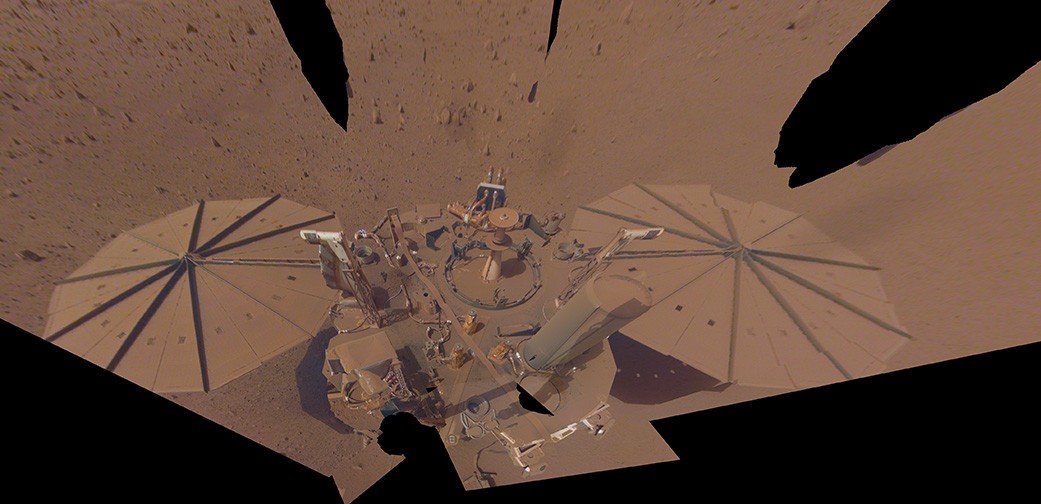Data collected from Mars by the InSight Lander before its untimely “death” last December may have revealed some of the planet’s strange behavior. Scientists studying Mars found that while its core caused the planet to shake, its rotation speed increased.
The detailed findings were published last June in the journal Nature, while NASA announced the results in a press release yesterday. Researchers led by Sébastien Le Maistre of the Royal Belgian Observatory have found that as the planet’s rotation speed increases, Mars’ days are shortened by a fraction of a millisecond each year. The team used data collected by the InSight Lander’s Rotation and Internal Structure Experiment (RISE) during the first 900 Martian days to study the planet’s motion over time.
“What we’re looking for is variations of only a few tens of centimeters over a Martian year,” said Le Maistre, who is also RISE’s principal investigator.
RISE provides insights into the spin and shake of Mars as scientists send radio signals from NASA’s Deep Space Network on the lander. RISE then reflects these waves back to Earth, allowing scientists to precisely track the position of the lander and then the movement of Mars. Using this information, Le Bastien and his team calculated that the rotation of Mars sees a rotation increase of 4 milliarc (or milliarc) seconds per year. For reference, a millisecond of arc is one thousandth of a second of arc, while a second of arc is 0.0002 degrees. In other words, we can say that this acceleration is incredibly small and researchers still have no clear reason as to what might be causing it.

Molten metal core at the center of Mars
The researchers also used RISE to find information about the inner geology of Mars, and Le Maistre and colleagues concluded that Mars has a core of molten metal at its center that wobbles as the planet rotates, causing the planet to shake. In addition, the team compared the values from the experiment with two different datasets from InSight’s onboard seismometer. Using different datasets, Le Maistre and colleagues found that the molten core had a radius of between 1,112 and 1,150 miles (1,789 to 1,850 kilometers). Mars has a radius of approximately 3,396 kilometers.
“This is a historic experiment,” Le Maistre said in a statement. “We spent a lot of time and energy preparing for the experiment and predicting these discoveries. But despite that, we were still surprised along the way and it’s not over because RISE has a lot more to reveal about Mars.”
Insight’s adventure to Mars
Before reaching the end of its life, InSight provided NASA and scientists with unprecedented Mars geophysical data, as well as the first direct observations of another planet’s core, as NASA’s Jet Propulsion Laboratory noted. InSight has spent more than four years collecting geological data on Mars during its lifetime. InSight has recorded data on more than 1,000 earthquakes on Mars, called “Mars earthquakes,” and in May 2022 the lander detected the largest earthquake of its time at a magnitude of 5. Later that year, NASA announced that InSight had detected the energy of meteoroids hitting the surface of Mars, and the event felt like a “light hit” to InSight.